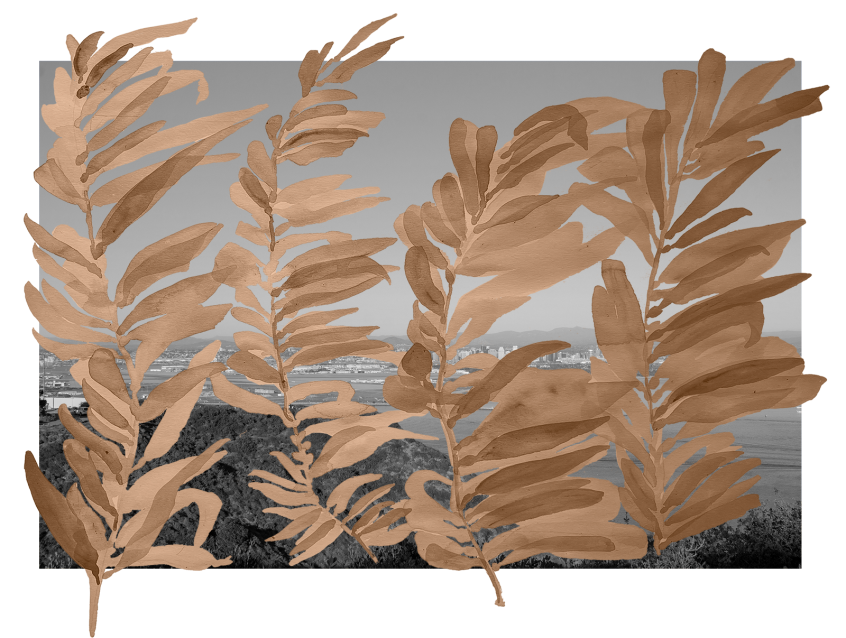Written by Joe Riley
Photos by Kenan Chan
On June 2, 2023, the Center for Marine Biodiversity and Conservation (CMBC) hosted “Seaweed Horizons,” an event which brought together scholars and scientists from across UC San Diego and the greater San Diego region for interdisciplinary conversations, presentations, and a hands-on workshop about marine algae.
Co-sponsored by CMBC, Nature, Space and Politics, and UC San Diego International Institute, this inaugural event at the Ted and Jean Scripps Marine Conservation and Technology Facility (MCTF) was led by artist/writer Joe Riley (PhD candidate, Visual Arts at UC San Diego), artist/chef Audrey Snyder (MS Regenerative Studies, CalPoly), scientist/activist Danielle McHaskell (PhD student, Scripps Oceanography at UC San Diego), in dialogue with Dr. Kelema Lee Moses (Urban Studies & Planning at UC San Diego).
Input your text here! The text element is intended for longform copy that could potentially include multiple paragraphs.
Joe and Audrey presented their interdisciplinary “co-laboratory,” Passengers of Change, which explores the scientific and hydropolitical ecology of out-of-place seaweeds. Their work together takes marine algae as a framework for critique of the characterization of species as “non-native” and “invasive,” and considers these characterizations as points of contact for boundary work between artists and scientists in the study of improvisational and historical patterns of colonization across human and nonhuman systems. This work invites us to think about the transportation and archiving of seaweed biota and photographic and phycological materials at the Scripps Institution of Oceanography Archives.
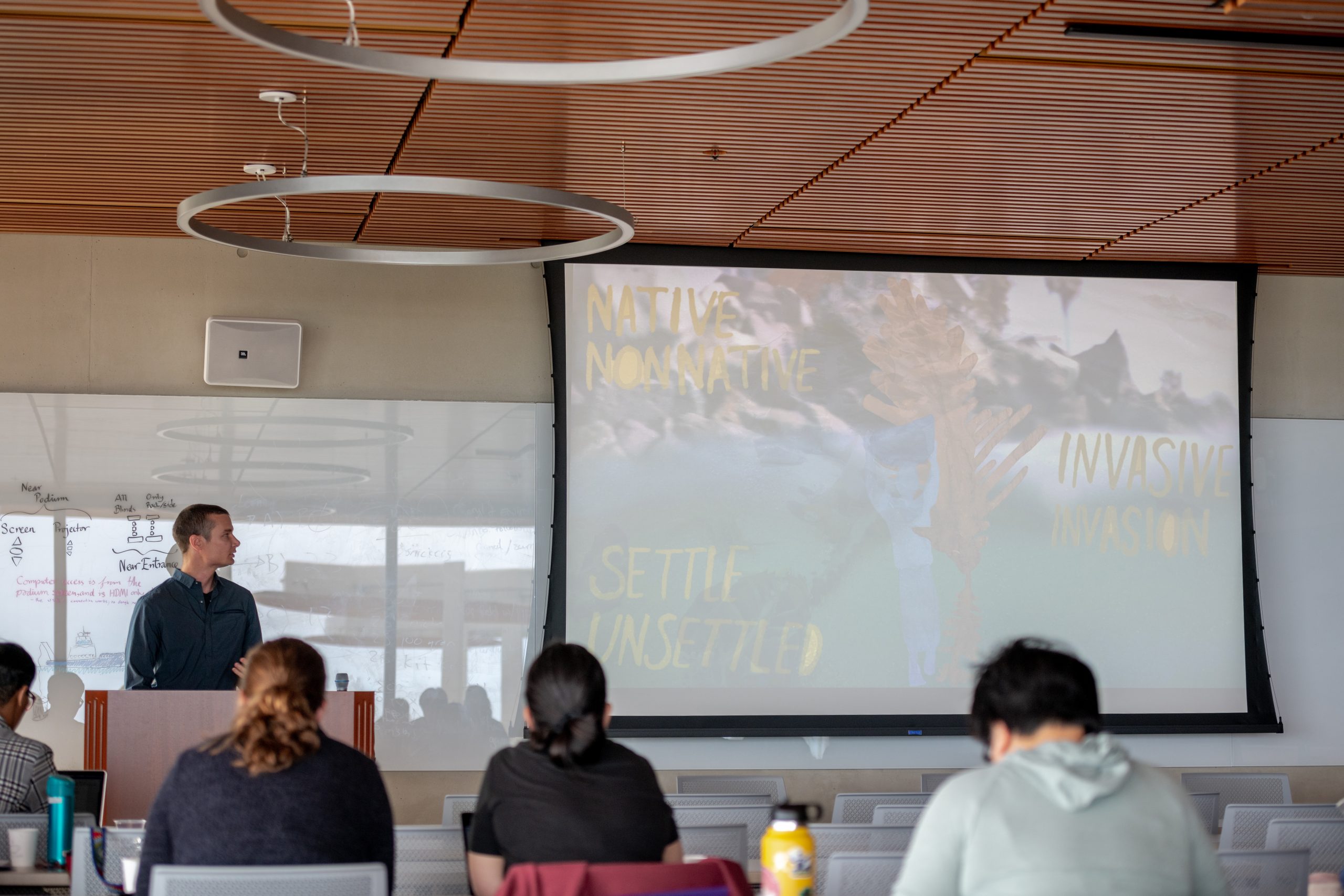

Left: Joe Riley (left) presenting his and Audrey Snyder's Passengers of Change project. Artwork by Audrey Snyder.
Right: Audrey Snyder (center) sharing a seaweed specimen, collected at Eniwetok Atoll in the Marshall Islands during biological surveys that happened alongside U.S. nuclear testing in the Pacific between 1946-1958. Specimen on loan from the San Diego Natural History Museum's collection (notably, Scripps Oceanography transferred its algae herbarium to SDNHM in 1995).
Danielle shared her ongoing project MAMI WATA (Multi-year Assessment of Marine Invasive and Worldwide Algae Transported Across the Pacific) which seeks to understand and account for the abundance and distribution of marine macroalgae Undaria pinnatifida and Sargassum horneri in the waters of coastal Southern California. Alongside marine ecological survey methods, the project is grounded in African and diasporic marine caretaking practices, water stories, and spirit.

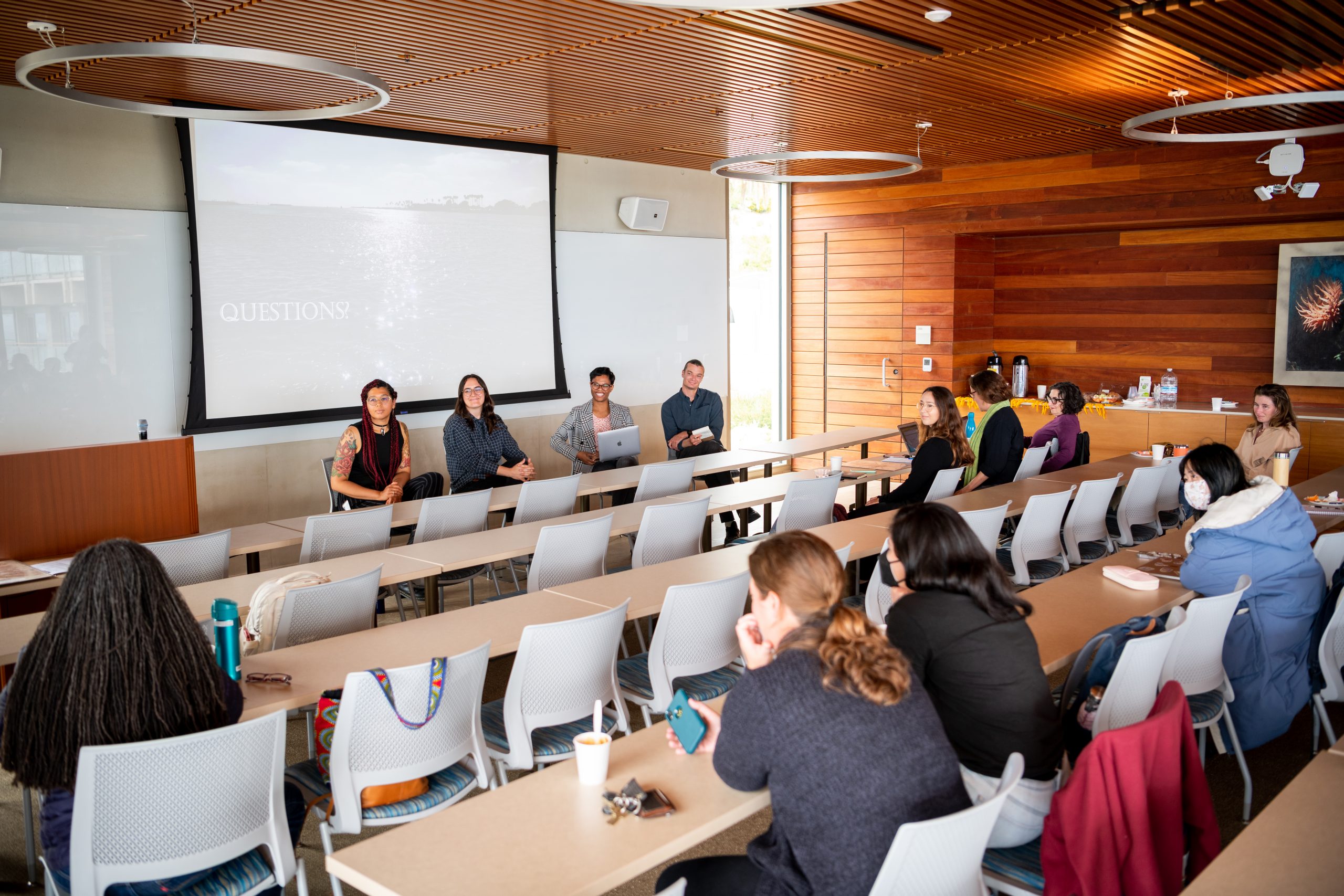
Left: Danielle McHaskell (left) presenting her doctoral research, MAMI WATA.
Right: Attendees listen to the panel discussion
Respondent Dr. Kelema Lee Moses introduced place-based perspectives toward Pacific coastal infrastructures and environmental issues to the conversation and pressed on key questions of Seaweed Horizons:
- What are some of the existent hands-on theorizations around ecological elements such as algae and water?
- Where and how does the history and practice of scientific botany and collecting structure the politics of the characterization of nonhuman life as “non-native” and “invasive?”
- In what ways can hands-on elemental theorizations remake current socio-technical systems beyond extraction? How can art, social practice, storytelling, and science collaborate in crafting multi-species futures?
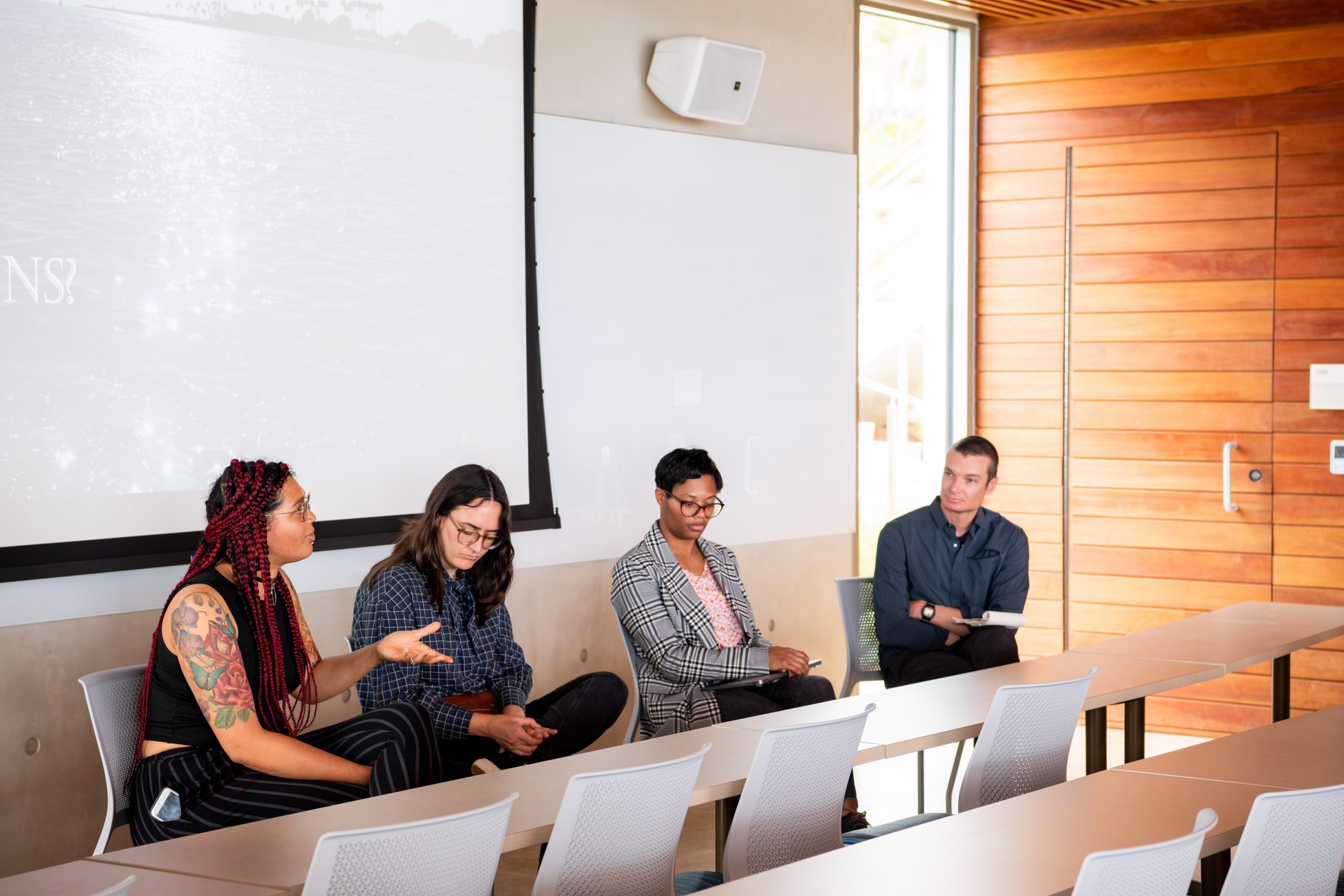
Panel discussion with (left to right) Danielle McHaskell, Audrey Snyder, Dr. Kelema Lee Moses, and Joe Riley.
The dialogue continued during a seaweed pressing workshop, where participants worked at the wet-lab benches in the MCTF teaching labs and learned to identify and press locally collected seaweed specimens using traditional herbarium preservation techniques. Audrey and Joe also debuted an experimental sculpture-instrument, “Herbarium Bench,” which re-imagines the laboratory bench as a platform for rest and contemplation. When people sit atop the bench, their weight compresses the seaweeds stored within the bench. Participants in the workshop made personal seaweed pressings, and also added to the large-scale pressing, a collectively produced document created with the Herbarium Bench.
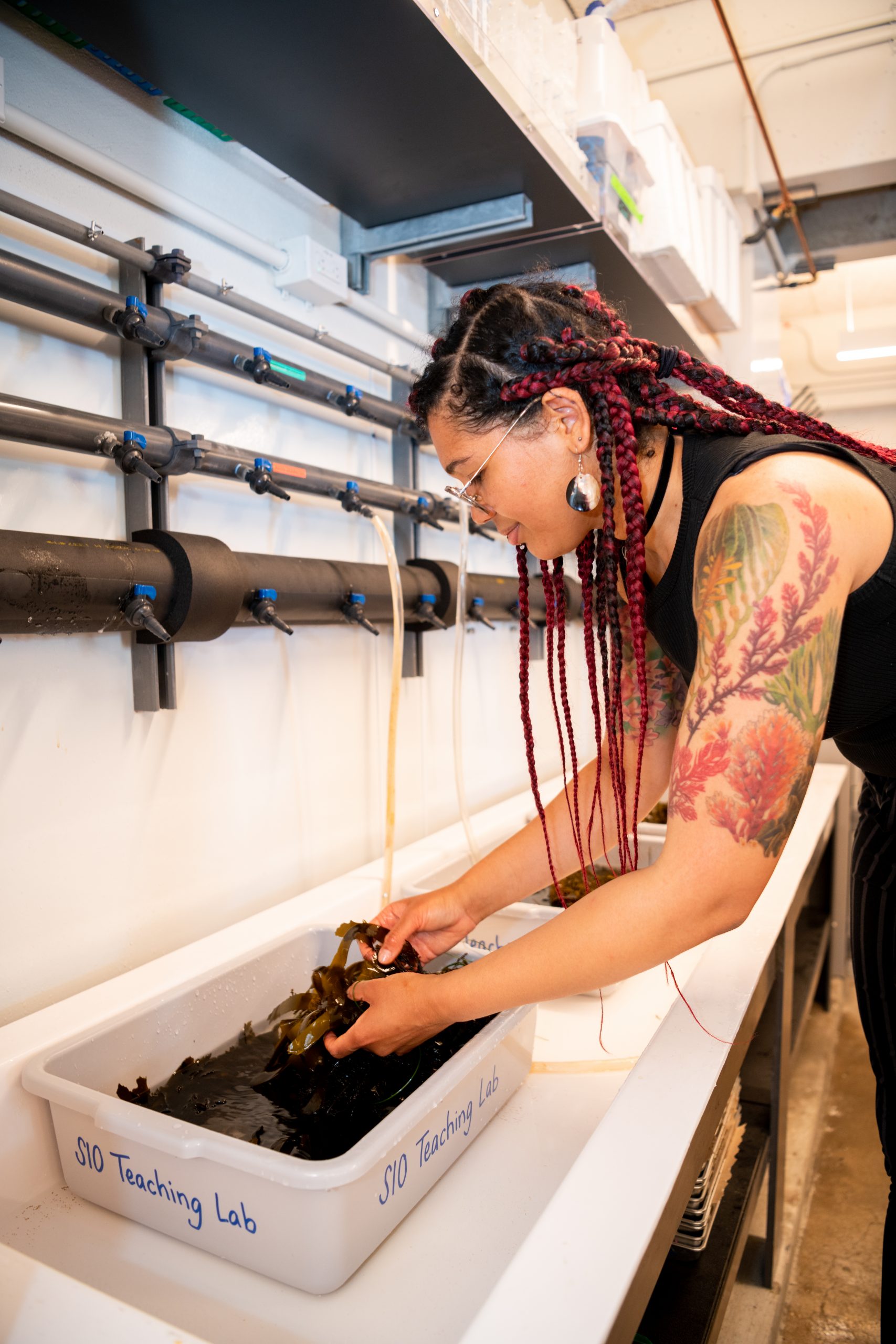
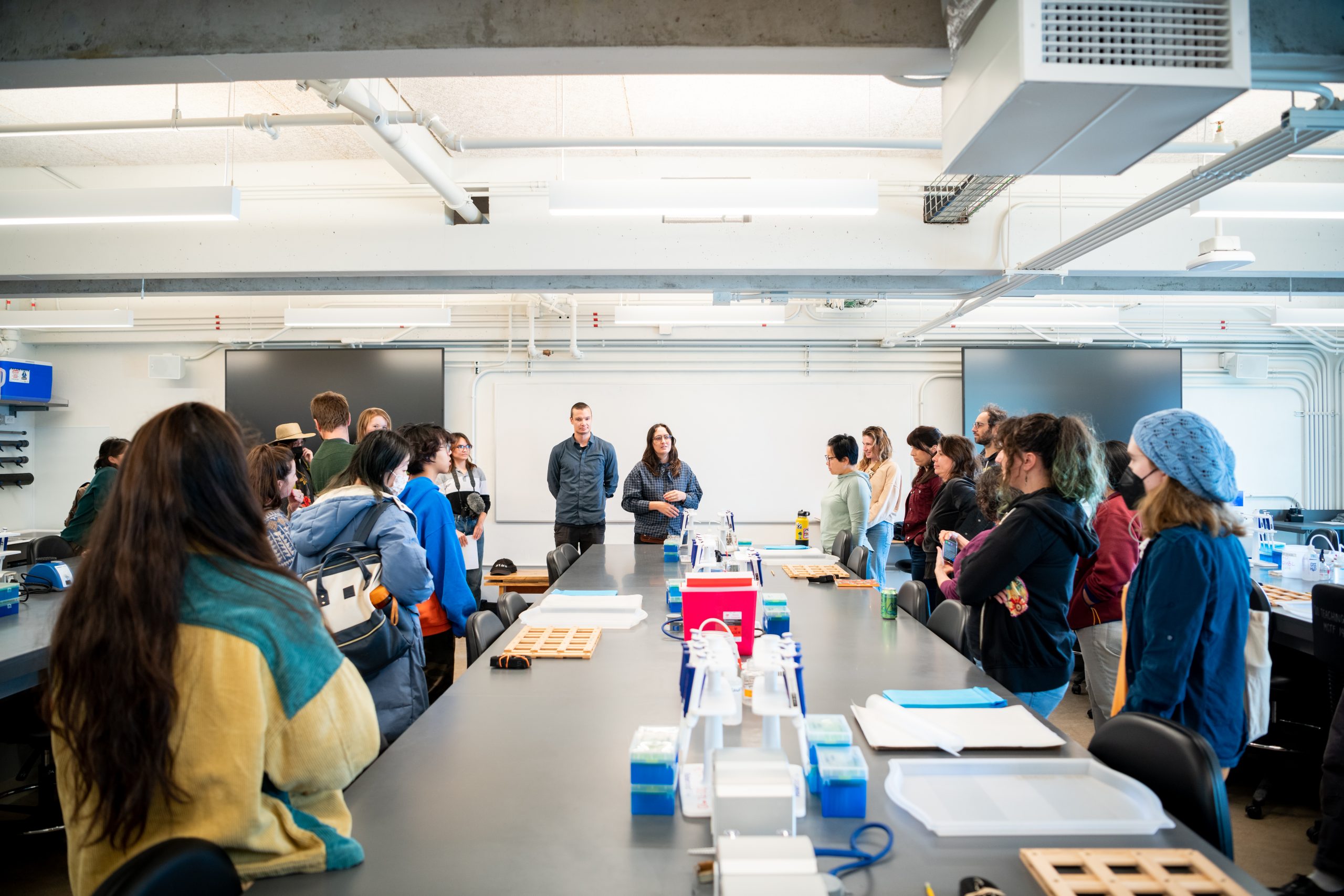
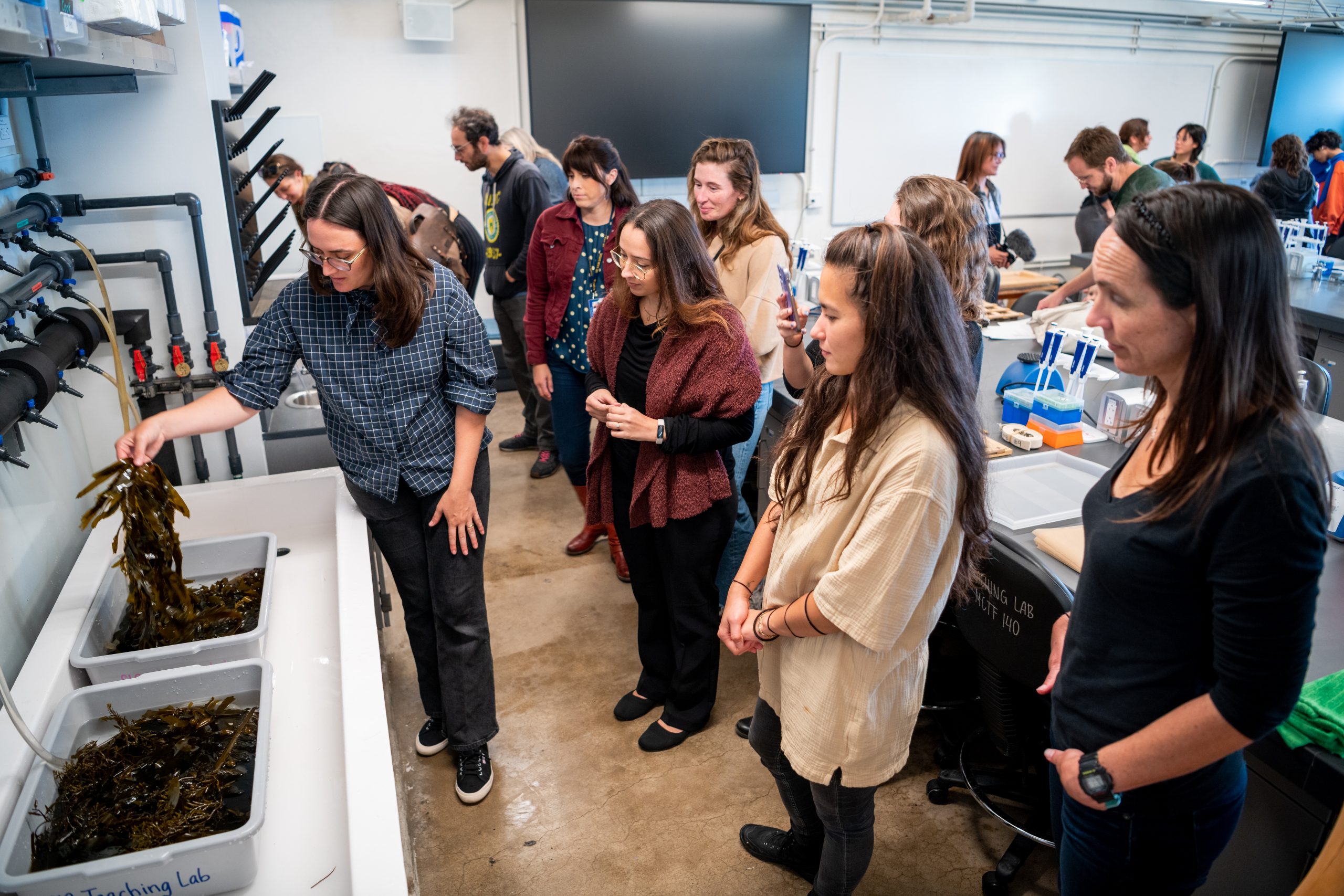
Left: Danielle handling seaweed. Top Right: Seaweed Horizons attendees gathered in the MCTF teaching laboratory while Joe and Audrey (center) lead the seaweed pressing workshop and introduce the “Herbarium Bench.” Bottom Right: Workshop participants selecting seaweed for pressing.
In an echo of mid-19th century algal curiosities pressings, where the specimens are often arranged in ordered visual designs, workshop participants made their own compositions and arrangements of seaweeds on herbarium mountain paper. Notably, Ellen Browning Scripps, a founder of Scripps Institution of Oceanography, was also a seaweed collector and created similarly arranged pressings with seaweeds she collected from around La Jolla.
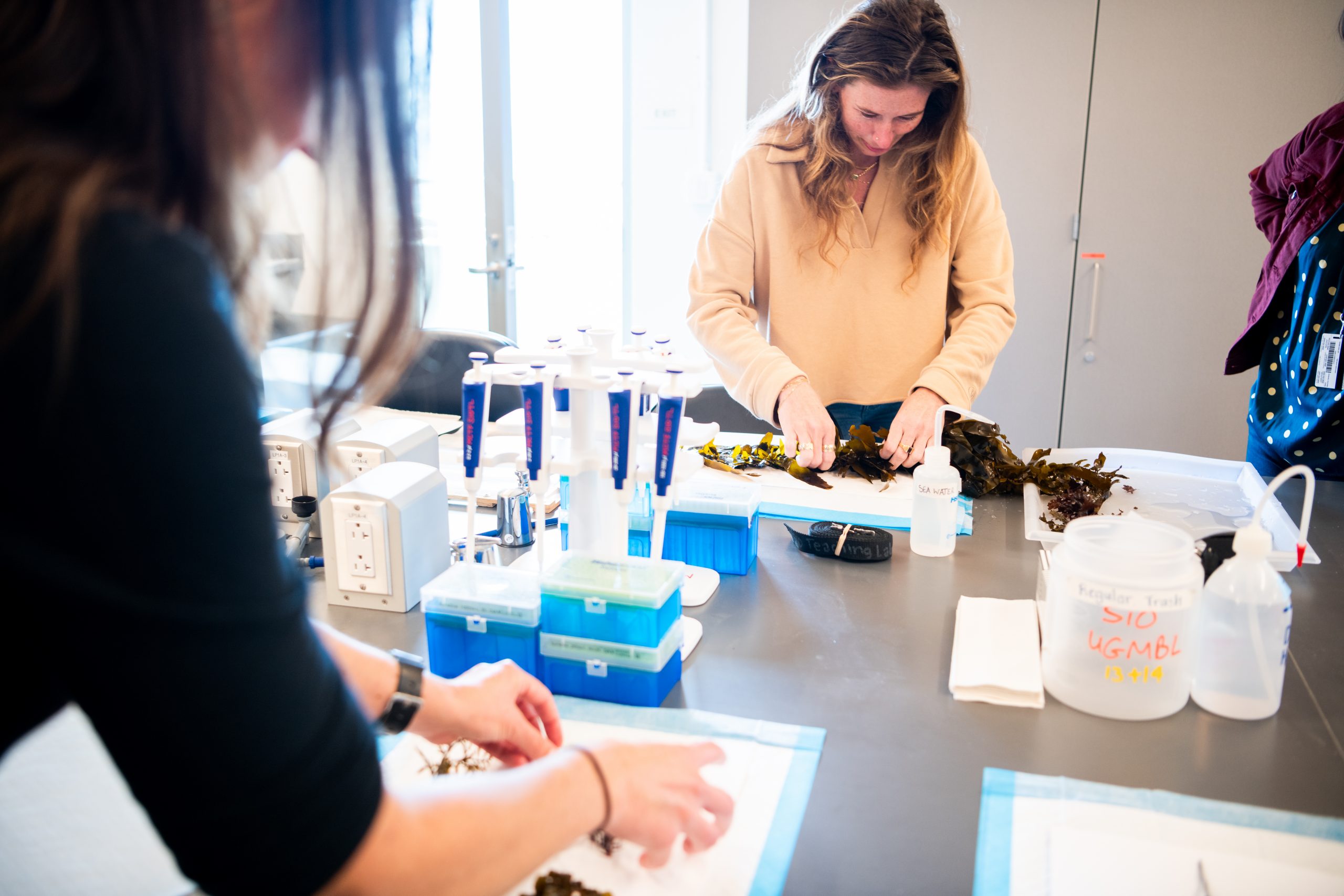

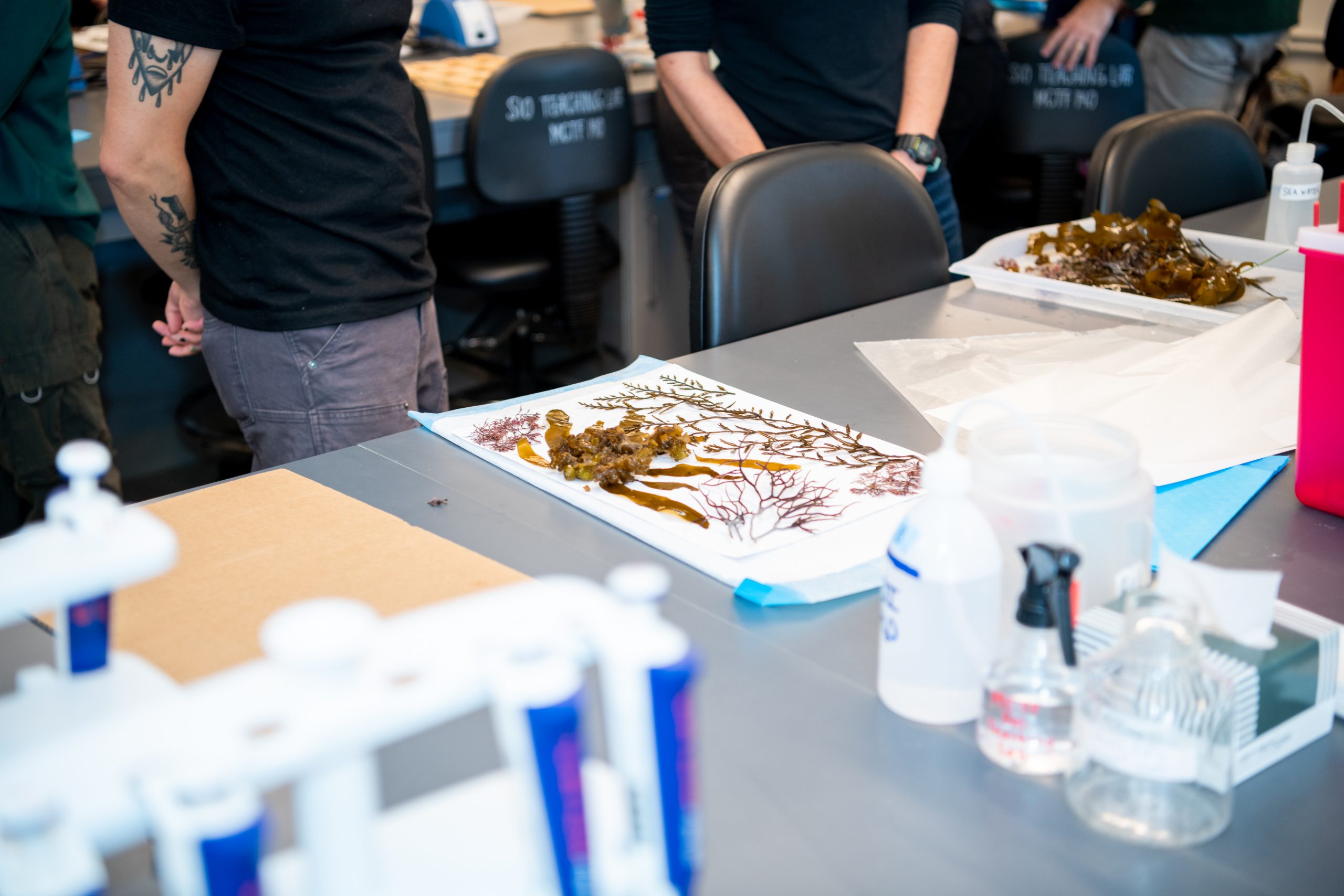
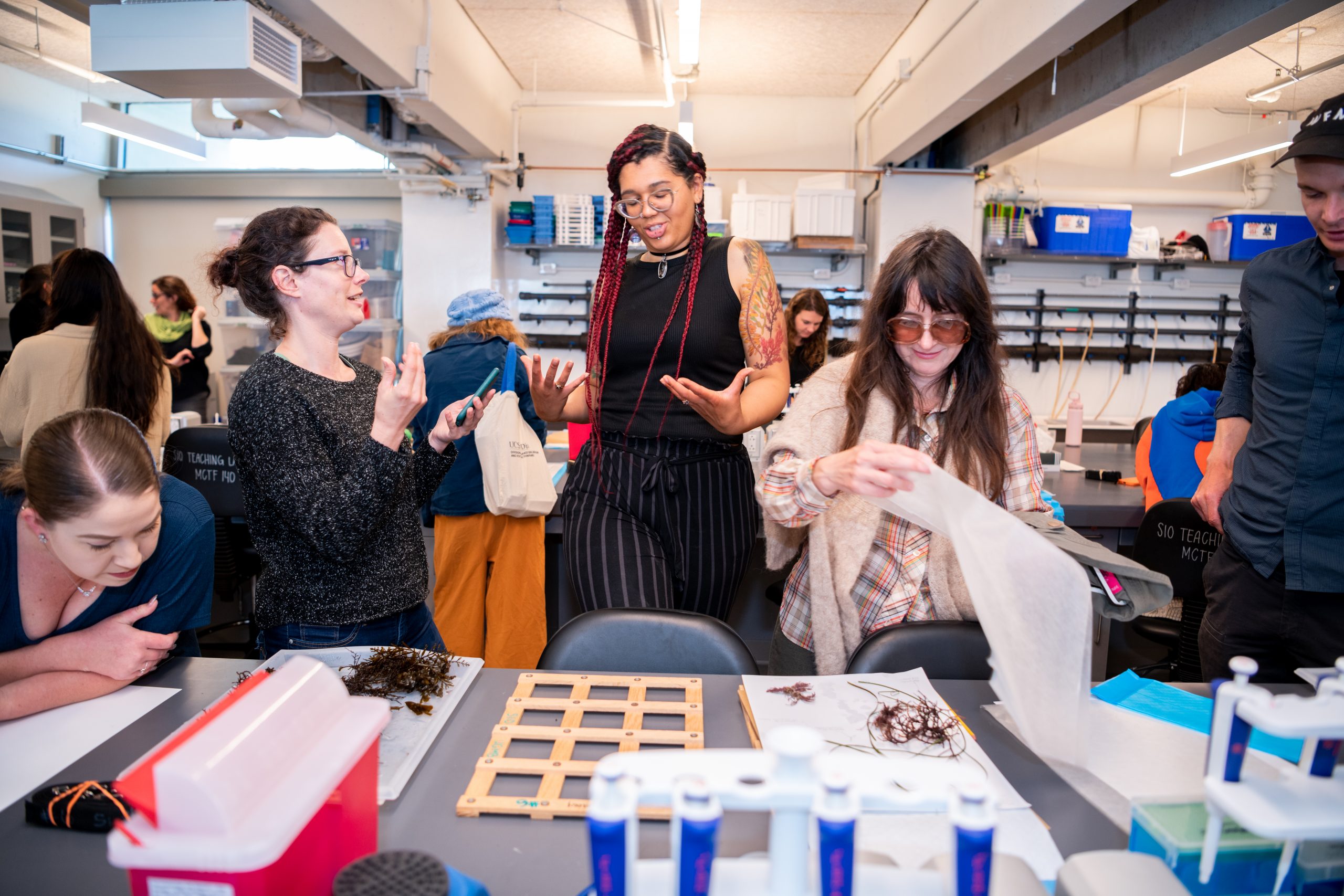
Top: PhD candidate Jordan DiNardo (center) creating a seaweed pressing.
Middle Left and Right: Selecting and placing seaweeds for an algal composition.
Bottom (left to right): Megan Kennedy (Scripps staff); Kelsey Miller (Scripps alumni, scientist and PhD student at Simon Fraser University); Danielle McHaskell; Lucy Solomon (artist and professor of Art, Media, and Design at CalState San Marcos); Joe Riley.
Combining educational presentations, the informative panel, and the hands-on seaweed pressing workshop, the Seaweed Horizons event successfully brought together members of the CMBC, Scripps Institution of Oceanography, and the greater UC San Diego community for an interactive day of learning and collaboration.
Many thanks to Audrey Synder, Danielle McHaskell, Joe Riley, Kerry Keith, Paula Santa Rosa, and Kenan Chan for their instrumental endeavors in organizing this event.
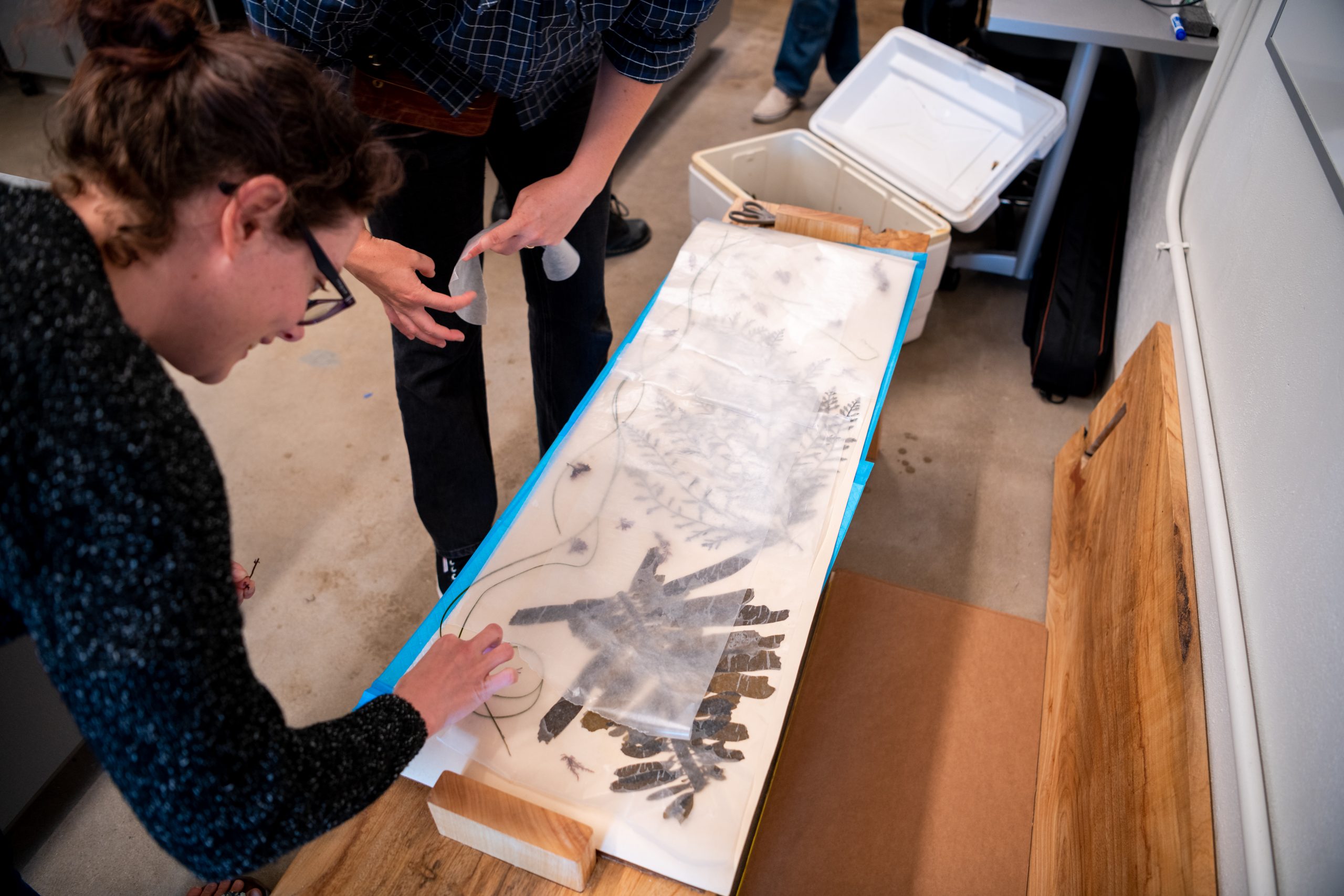
Kelsey and Audrey preparing seaweeds pressings using the Herbarium Bench.


